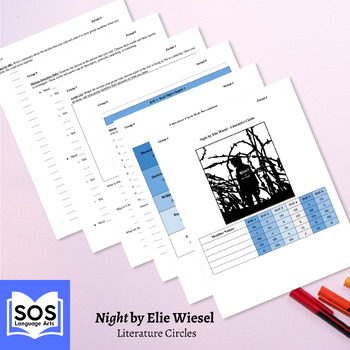“Night” by Elie Wiesel - Literature Circle
- PDF
Description
As a student, leading Literature Circles groups that have productive meetings when discussing a book like Night by Elie Wiesel is essential. It's fascinating to explore the various themes throughout the book, like the loss of identity, the power of hope, and the horrors of war. Working together in Literature Circles is an excellent way to collaborate and gain a deeper understanding of the text. Additionally, students need to share their reactions to the story and make connections to themselves, their world, and other texts. This helps to foster a deeper appreciation for the book and encourages them to think more critically about the themes presented.
Students will take on five roles during this activity: Discussion Leader, Diction Detective, Bridge Builder, Reporter, and Artist. These roles will be rotated throughout the novel, ensuring that every student gets a chance to complete each part. The activities are spread across six sessions with assigned chapters from Night per day.


